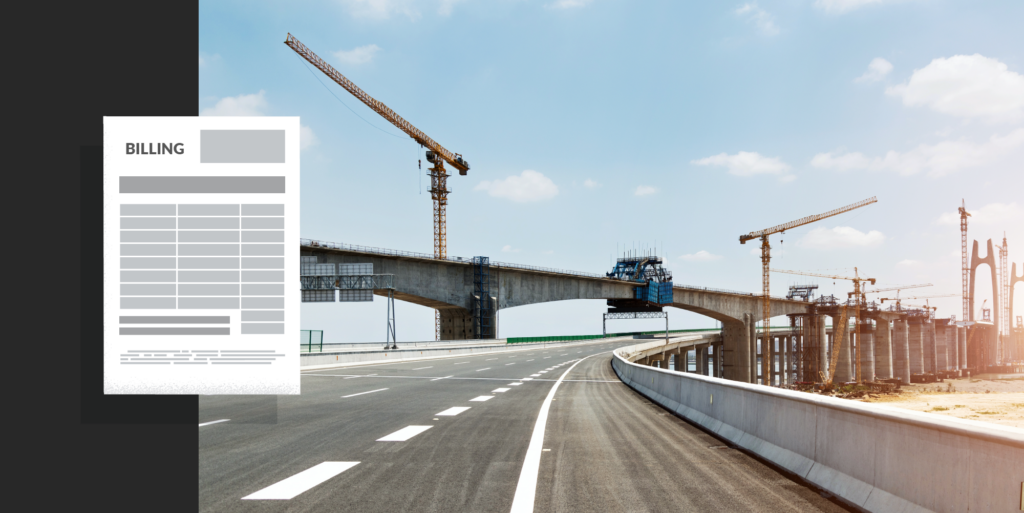— 18 min read
The Role and Relevance of the Construction General Ledger
Last Updated Jun 18, 2024
Last Updated Jun 18, 2024

The general ledger is a comprehensive record of a company’s financial activity. In the construction industry, the general ledger plays a critical role in tracking and assessing a firm’s financial health. Proper management and understanding of the general ledger are essential to accurate financial reporting, better decision-making and improved profitability.
In this article, we explore the significance of the general ledger in construction accounting, delve into best management practices and highlight its importance in monitoring financial performance.
Table of contents
Types of Construction Ledgers
Ledgers are not just bookkeeping tools; they are the financial bedrock that supports informed decision-making and comprehensive tracking of every dollar spent and earned. While the general ledger holds the entirety of a company’s financial transactions, other construction ledgers bring clarity and detail to specific aspects of the business.
Each subsidiary ledger has a unique role, yet they are all interlinked, feeding into the general ledger to present a complete financial picture.
| Type of construction ledger | Role of the ledger |
|---|---|
| General ledger | Central ledger that records and classifies every financial transaction |
| Job cost ledger | Records of all costs associated with an individual project (including labor, materials, etc.) |
| Equipment ledger | Tracks all costs related to construction equipment |
| Inventory ledger | Keeps track of all construction materials and goods |
| Accounts receivable ledger | Tracks all credit sales (what customers owe to the company) |
| Accounts payable ledger | Tracks all credit purchases (what the company owes its suppliers/vendors) |
| Construction loans payable ledger | Records transactions related to construction loans |
General ledger
The general ledger is the central archive of all financial transactions of a construction company. It records and classifies every financial transaction, whether it pertains to revenue, expenses, assets, liabilities, or equity. It’s the aggregate of all other ledgers and is used to prepare key financial statements.
Job cost ledger
Crucial for tracking the financial progress of individual construction projects, the job cost ledger breaks down costs by scope or work package. It serves as a record of all costs associated with a project, such as labor, materials, subcontracting, and overheads. This ledger is essential for assessing the profitability of each job and ensuring that costs stay within budget.
Learn more: Mastering Job Costing in Construction
Equipment ledger
The equipment ledger tracks the costs related to construction equipment. It details purchase costs, depreciation, repairs, and maintenance expenses. This ledger helps manage the significant investment in equipment that construction companies make as well as plan for future equipment needs.
Inventory ledger
This ledger tracks all construction materials and goods. It records purchases, usage, wastage, and stock on hand, providing real-time data on inventory levels to prevent overstocking or shortages.
Stay updated on what’s happening in construction.
Subscribe to Blueprint, Procore’s free construction newsletter, to get content from industry experts delivered straight to your inbox.

Accounts receivable and payable ledgers
The accounts receivable ledger records all credit sales, tracking what customers owe to the company. It is vital for managing cash flow, as it directly affects how much cash is available at any given time for operational expenses and investment.
The accounts payable ledger documents all credit purchases, detailing the amounts the company owes to suppliers and vendors. This ledger helps manage debts and is essential for maintaining good relationships with subcontractors and suppliers through timely payments.
Construction loans payable ledger
Typically owners and developers will record all transactions related to construction loans, including loan disbursements, interest accruals, and repayments. This specialized ledger is key for monitoring the financing side of construction projects and ensuring loan compliance.
Together, these ledgers form a network of financial information that is fundamental for construction companies to manage operations effectively, comply with regulations, and achieve profitability.
General Ledger in Construction Accounting: The Basics
In construction, a "ledger" might first bring to mind the horizontal beams that support the vertical framing of a structure. But on the financial side, a ledger provides a different kind of support — it's the backbone of a company's financial records. Just as a ledger in construction gives stability to a building, the general ledger gives clarity, structure and order to a firm’s finances.
At the heart of the accounting system lie two key components: the chart of accounts and the general ledger. Similar to how a table of contents organizes the chapters of a book, the chart of accounts lists the categories used to organize financial transactions.
The categorization provided by the chart of accounts sets up a clear framework for entering financial transactions into the general ledger. Think of the general ledger as the master record, or central repository, of all a company's financial transactions. These details are essential for creating three financial statements that tell the story of a company's financial health: the income statement, balance sheet, and statement of cash flows.
Typical Sections in a General Ledger
A general ledger is organized into two main sections: the balance sheet and the income statement. The balance sheet provides a static view of the company's financial position at a given moment, showing what the company owns and owes. The income statement, on the other hand, is dynamic, depicting how the company performs financially over a period. Here is a breakdown of each section:
Balance sheet
A balance sheet in construction accounting is a financial statement that provides a snapshot of a construction company's financial position at a specific point in time. It details the company's assets, liabilities, and equity, which are crucial for understanding its financial health.
- Assets: All the resources owned by the company. These can be both current (such as cash, inventory, and receivables) and non-current (like buildings, machinery, and intellectual property).
- Liabilities: Current or future financial debts the company owes to outside parties, which include loans, accounts payable, mortgages, and other debts that must be settled over time.
- Owners’ Equity: Also known as shareholders' equity, this reflects the amount of money that would be returned to shareholders if all the assets were liquidated and all the company's debts were paid off.
Income Statement
An income statement in construction accounting is a financial report that summarizes the revenues, costs, and expenses incurred during a specific period, typically a fiscal quarter or year. This will include:
- Revenues: All income generated from the company's operations, such as sales revenue, service income, and royalties.
- Construction Costs: Known as the cost of goods sold or cost of sales in other fields. For companies in the construction industry, this represents the direct costs associated with constructing buildings or delivering projects.
- Expenses / General Overhead: This section includes all the costs not directly tied to the production or purchase of goods. Examples include rent, utilities, insurance, and salaries of administrative staff.
- Other Income and Expenses: This segment records any financial transactions that don't fit neatly into the other categories, like gains or losses from investments or foreign exchange.
Why It’s Needed
The general ledger stands as an essential tool in accounting, performing multiple critical functions that are foundational for the financial health and transparency of a company.
Let's examine the specific functions the general ledger fulfills:
- Serves as a comprehensive record of all financial transactions: The general ledger provides a complete history, which is crucial for tracking the flow of money in and out of a business, ensuring that every penny is accounted for. Without it, a company would lack the detailed insight needed to understand its financial position.
- Allows for accountability: The general ledger serves as a source of truth for all financial data, which means it can be used to verify the accuracy of financial reports and to check for errors or fraudulent activity. By maintaining a thorough record of transactions, businesses safeguard themselves against financial discrepancies and mismanagement.
- Facilitates financial reporting and analysis: The data recorded in the general ledger is used to prepare key financial statements—like the balance sheet, income statement, and cash flow statement—which are essential for internal decision-making, attracting investors, securing loans, and complying with regulatory requirements.
- Assists in budgeting and forecasting: By providing historical financial data, it allows companies to spot trends, forecast future performance, and set budgets that are aligned with their financial position.
Stay updated on what’s happening in construction.
Subscribe to Blueprint, Procore’s free construction newsletter, to get content from industry experts delivered straight to your inbox.

How It Works
The general ledger is the foundation of your financial statements: Income Statement, Balance Sheet, Statement of Cash Flows. The general ledger in construction ensures that every financial transaction is balanced, with each debit matched by a corresponding credit. This method upholds the accuracy and integrity of the company’s financial records.
For instance,when a subcontractor has been contracted by a general contractor to complete a section of work, the subcontractor will invoice the GC. The invoice is booked as a debit to subcontractor expense, which is recorded on income statement, and a credit to accounts payable that is recorded to the balance sheet. This double-entry bookkeeping system of debits and credits ensures your transactions are in balance across these financial statements.
General Ledger as a Tool for Financial Management
For construction companies, the general ledger plays a crucial role in various financial management and control aspects.
Budgeting & Forecasting
One of the primary benefits of the general ledger is the depth of rich historical financial data it provides. By studying past transactions and financial patterns stored in the ledger, construction companies can gain insights into typical costs, durations, and revenue streams. This historical context is invaluable when setting new budgets, ensuring they are rooted in reality.
The general ledger offers a detailed breakdown of all financial transactions. This granularity allows companies to see precisely where funds were allocated, providing detailed insights into areas where savings were achieved or overruns occurred. The item-by-item structure of the general ledger enables a thorough and nuanced understanding of the budget.
Accurately forecasting cash flow and resource allocation is vital due to the industry's phased payment structures and substantial upfront costs. This data can help anticipate cash flow ebbs and flows, critical for an industry where timely payments to suppliers and workers are essential. Furthermore, analyzing past data allows construction companies to better forecast when they'll need more labor or equipment, ensuring resources are allocated efficiently.
Cost Tracking & Management
Cost tracking and management is the continuous process of monitoring, recording, and controlling expenses to ensure they align with the outlined budget. This is crucial in the construction landscape which is often plagued by the intricate and unpredictable nature of projects.
Accurate tracking and categorization of both direct and indirect costs within the general ledger provides a clearer picture of financial health, allowing firms to make informed decisions and set future budgets.
Indirect costs which include overheads can greatly impact the profitability of construction projects if not managed properly and thus the financial performance of the firm. The general ledger provides a transparent record of these expenses, allowing for identification of areas of potential savings or optimization.
One of the only certain things in construction management is that uncertainty will arise at some point during the project process. With uncertainty — unforeseen conditions, market fluctuations, project specification modifications — comes unplanned expenses. When these unexpected costs arise, they're recorded in the general ledger. This not only ensures transparency but also aids in future budgeting and forecasting, as patterns of unplanned expenses can be identified and contingencies can be better planned for.
Risk Management
Proper management of the general ledger plays a significant role in risk mitigation. Ensuring financial transparency by accurately recording transactions and quickly identifying any discrepancies. Such clarity is crucial for early detection of potential fraud, theft or accounting errors. Additionally, reconciling the general ledger allows construction firms to effectively manage their cash flow.
Given the substantial capital requirements of construction projects, having an accurate financial overview helps prevent liquidity issues, which can otherwise lead to project delays or contractual penalties. This aids in timely payments and proper management of accounts payable, ensuring strong subcontractor and vendor relationships and consistent material and labor supply.
An up-to-date general ledger enables firms to accurately assess the profitability of the business, crucial for identifying exceeding budgets or proving financial viability. Overall, regular general ledger reconciliation stands as a vital practice in steering construction firms away from financial pitfalls and towards success.
Regulatory Compliance and Reporting
To ensure its accuracy and relevance, it's paramount for the general ledger to align with recognized industry standards. The Generally Accepted Accounting Principles (GAAP) dictate consistent and comprehensive financial recording practices tailored for varied industries, including construction. While the general ledger is a foundational tool for recording and organizing a company's financial transactions, GAAP provides the standardized framework within which these records are maintained and reported.
On the international front, the International Financial Reporting Standards (IFRS) offer guidelines to ensure financial statements are consistent for companies operating across borders. Additionally, the Financial Accounting Standards Board (FASB) continually refines and updates these accounting practices, keeping businesses abreast of the latest accounting trends.
The interrelation between these industry frameworks and the construction general ledger underscores their pivotal role in upholding financial transparency, consistency, and reliability.
Ensuring the general ledger adheres to these well-established standards streamlines both taxation and auditing processes. An accurate ledger is instrumental in compiling precise tax returns. Furthermore, external audits are common in the construction industry, whether for regulatory compliance, financial transparency, prequalifying to bid, or stakeholder assurance. A well-maintained ledger facilitates smoother audit processes. Auditors can easily trace and verify transactions, ensuring the company's financial statements are accurate and reliable.
Integrating the General Ledger into Financial and Project Management Systems
The general ledger isn’t an isolated entity but a piece of a firm's broader financial performance.
Integration with other company-wide systems, financial and project management, is imperative for seamless operations. For example, incorporating the general ledger with project management software helps show as work progresses, financial implications are recorded and reflected in real time in the ledger. This seamless transfer of data around revenue and expenses bridges on-ground activities with the firm’s overall financial health — providing real-time financial monitoring, which can be crucial in an industry where expenses can rapidly escalate.
Additionally, the general ledger often interacts with other accounting modules. As invoices roll in or payments are made, accounts payable and receivable get updated directly, ensuring liquidity is managed effectively. Asset management too ties back to the ledger, with depreciation, acquisitions or disposals of assets like machinery and vehicles being accurately tracked.
The advantages of this integrated approach are multifaceted. It not only streamlines processes by minimizing manual inputs and eliminating redundancies but also offers a unified perspective of the company's fiscal health. Furthermore, this synergy greatly diminishes the risk of human errors, a pivotal consideration in a field where even minor financial discrepancies can impact the outcome of a project or the firm’s profitability.
Stay updated on what’s happening in construction.
Subscribe to Blueprint, Procore’s free construction newsletter, to get content from industry experts delivered straight to your inbox.

Best Practices for Managing General Ledger in Construction Projects
Here are some best practices for managing the general ledger tailored for the construction industry:
1. Prioritize accuracy in record keeping.
The general ledger serves as the backbone of a company's financial structure, providing a comprehensive overview of its economic activities. As such, it's imperative to uphold detailed and accurate records of financial data, including expenditures, income, and other pivotal fiscal details.
Essential distinctions, such as between direct costs (like labor, materials and equipment specific to projects) and indirect costs (like administrative salaries and office utilities), paint a clearer picture of a project's — and the firm’s — true profitability. Accurate records not only streamline auditing processes but also bolster stakeholder confidence, from clients to investors. The rise of specialized construction accounting software aids businesses in ensuring the ledger's precision, making real-time updates and efficiently integrating with construction project management systems.
2. Simplify the general ledger and rely on job costing for details.
In construction accounting, the unique nature of project-based transactions adds an extra layer of complexity. Given this, it's tempting to cram the general ledger with intricate levels of detail. However, one of the best practices is to maintain simplicity and cleanliness in the general ledger. By keeping it streamlined, it’s easy to get a bird's eye view of financials which is essential for financial management. When top-line figures are readily available without sifting through a myriad of details, decision-makers can quickly gauge the financial position, facilitating swifter, informed choices.
For the granular, detailed information, lean on the job costing system. It's designed to handle the intricacies of project-specific expenses and revenues, allowing for precise tracking and analysis. By distinguishing between the overarching construction ledger and the in-depth job costing, it creates a more efficient and organized financial structure.
3. Reconcile regularly.
From procurement of materials to labor costs, or subcontractor payments to machinery rentals, the influx of data involved in construction accounting can be overwhelming. As such, it's paramount to reconcile the general ledger regularly.
Reconciliation ensures that every transaction recorded in the construction ledger matches the corresponding source documents — be it invoices, receipts or bank statements. This process not only helps in detecting discrepancies, errors, or potential fraud but also ensures the integrity of financial statements. For construction companies, where project budgets are tight and financial missteps can result in significant losses, regular reconciliation acts as a safeguard.
Consider implementing a set schedule for ledger reconciliation — whether it's bi-weekly, monthly, or quarterly — based on the volume of transactions. Consistently aligning the general ledger with actual financial activities, fortifies the firm's financial position, fosters stakeholder trust and paves the way for informed decision-making.
4. Classify your accounts correctly
In the realm of construction accounting, the correct classification of accounts in the general ledger is paramount for capturing an accurate representation of a company's financial health. Given the multifaceted nature of construction projects, expenses can range from direct costs like materials and labor to indirect costs such as site overheads, equipment maintenance or administrative fees.
Moreover, by classifying accounts correctly, firms can track project profitability, assess financial trends and forecast future expenses. As construction projects can often span long durations and involve multiple stakeholders, any discrepancies or misclassifications can lead to inaccurate financial statements, potential legal disputes, or unsatisfied clients.
Lastly, correct classification facilitates budgeting and financial planning. With an organized ledger, managers can swiftly allocate resources, ensure funds are used efficiently, and guarantee that each project phase is adequately financed. In essence, proper account classification in the general ledger is not just a best practice but a foundational step in successful construction financial management.
The importance of correct classification
I would commonly see prepaid accounts categorized as liabilities on accident ("You've already paid; it's an asset!") or equipment expenses hitting the jobs directly instead of going through the equipment indirect account. This would cause the job to take the cost of the repair directly, and then get hit with the equipment "rate” again when it was run on the job site when the rate itself includes expected repairs.
Case Study: The General Ledger in Practice
Let’s examine a hypothetical example of how a construction firm uses the general ledger in practice.
WeBuild, a general contractor, built a reputation for delivering quality projects on time. Internally, their financial tracking system had become outdated. Recognizing the need for more precise financial oversight, they transitioned to a construction accounting software platform, which included a general ledger that reflected real-time updates.
With multiple projects underway simultaneously, tracking costs, revenues, and payments for WeBuild was intricate and time-consuming. Their manual recording system often led to delays in invoicing and occasional discrepancies in financial statements. The need for real-time data to make immediate decisions was imperative.
After transitioning to the cloud-based system, WeBuild identified an accounting inconsistency with one of their hauling subcontractors who is responsible for transporting materials from job sites. Contrary to best practices, the subcontractor recorded incoming payments directly into their bank, bypassing the accounts receivable process. To reconcile their general ledger, they fabricated new invoices, which culminated in a claim that WeBuild owed them an outstanding $350,000.
However, due to the accuracy of WeBuild’s financial records and regular reconciliation of the general ledger, the general contractor was able to demonstrate that these invoices had been fulfilled previously.
The subcontractor’s accounting discrepancies, born from misclassifications and non-standard practices, had catastrophic consequences—the hauling subcontractor went out of business within six months, primarily due to mismanagement of their general ledger.
With automated entries and a systematic classification system, errors in WeBuild’s construction ledger reduced significantly. The clear differentiation between direct and indirect costs provided a better perspective on project profitability. With real-time data available, WeBuild was able to monitor its cash flow more effectively, ensuring that funds were available for immediate project needs.
When the annual external audit took place, auditors found the reconciled and well-maintained ledger, which allowed the process, which used to take weeks, to be completed in days. Furthermore, with a clearer view of financials, WeBuild’s leadership team could make informed decisions regarding project bidding, resource allocation, and more.
Using the General Ledger for Success in Construction
In the construction industry, where projects evolve daily and financial intricacies are nuanced, the general ledger stands as a pillar of financial clarity and control. It offers not just a record, but a strategic tool, allowing firms to navigate both the minutiae of daily transactions and the broader perspectives of financial strategy.
As technology continues to reshape the industry, digital advancements in ledger management promise even greater precision, efficiency, and insight. For construction businesses aiming to maintain their competitive edge, diligent attention to and investment in implementing general ledger best practices are more than just good accounting — it's foundational to ensuring their success, growth and profitability.
Was this article helpful?
Thank you for your submission.
100%
0%
You voted that this article was . Was this a mistake? If so, change your vote here.
Scroll less, learn more about construction.
Subscribe to The Blueprint, Procore’s construction newsletter, to get content from industry experts delivered straight to your inbox.
By clicking this button, you agree to our Privacy Notice and Terms of Service.
Categories:
Tags:
Written by
Kelsie Keleher
12 articles
Kelsie is a Senior Strategic Product Consultant for general contractors at Procore; working closely with civil and infrastructure clients. Kelsie holds a Masters of Business Administration (MBA) and has close to a decade of experience in construction accounting and finance.
View profileTaylor Riso
73 articles
Taylor Riso is a marketing professional with more than 10 years of experience in the construction industry. Skilled in content development and marketing strategies, she leverages her diverse experience to help professionals in the built environment. She currently resides in Portland, Oregon.
View profileExplore more helpful resources

Construction Collaboration: Navigating the Intersection of Project Management and Accounting
Accounting and project teams work together to move the financial aspects of projects through to completion. Data sharing allows for concurrent review to make this possible. Teams need to share...

What are Committed Costs in Construction Accounting?
In construction projects, managing finances can be a challenging task — but understanding committed costs can simplify the process. Committed costs refer to expenses that are guaranteed through formal agreements,...

Understanding Construction Financial Statements
For construction firms, effectively managing financial statements is an important building block for success. These documents play a key role in tracking performance, maintaining financial health and securing future projects....

Construction Progress Billing: Keeping the Cash Flowing
Rome wasn’t built in a day, and neither are skyscrapers and bridges. Construction projects take time, and because of that, they require significant upfront costs for labor, materials and equipment....